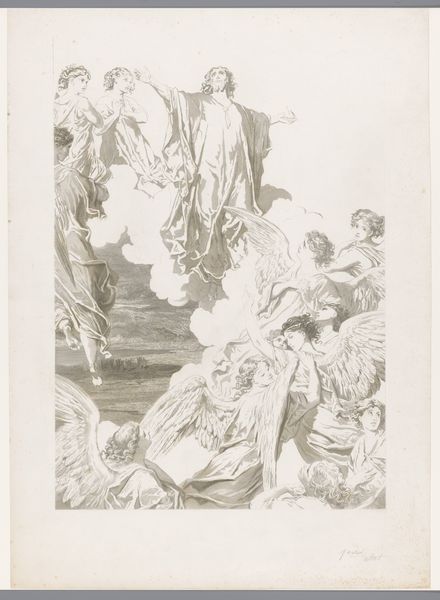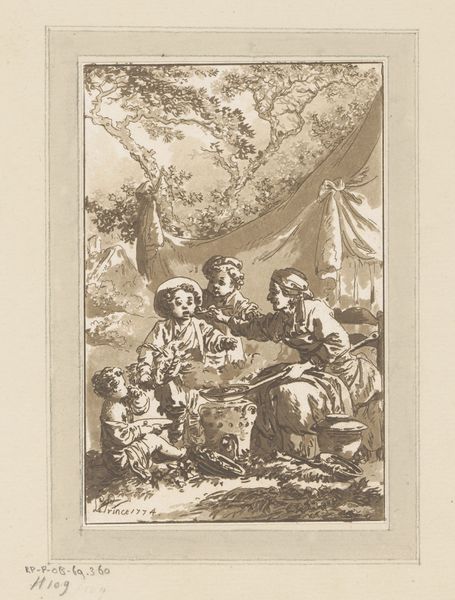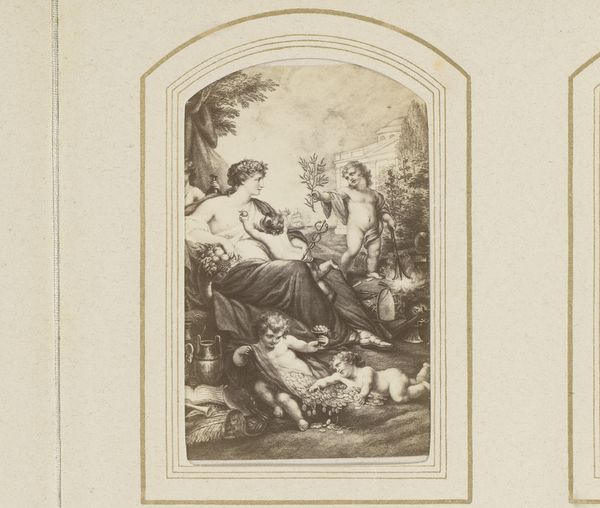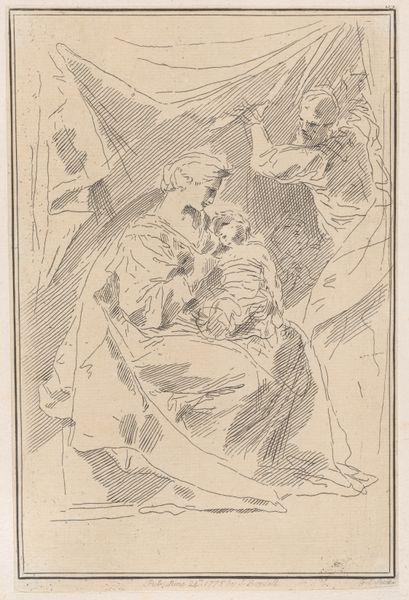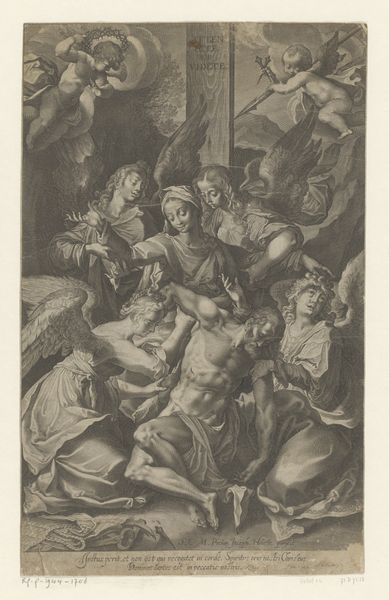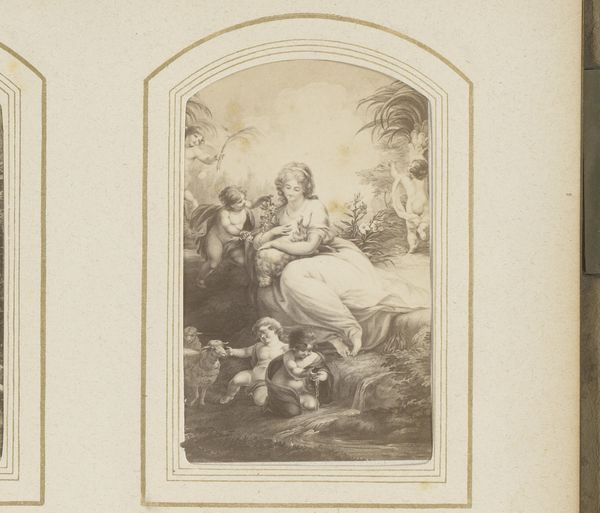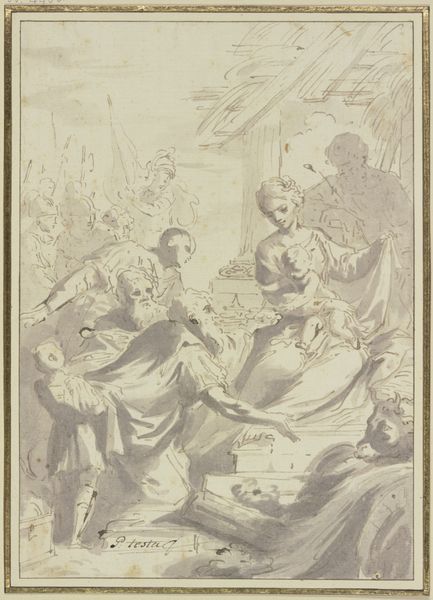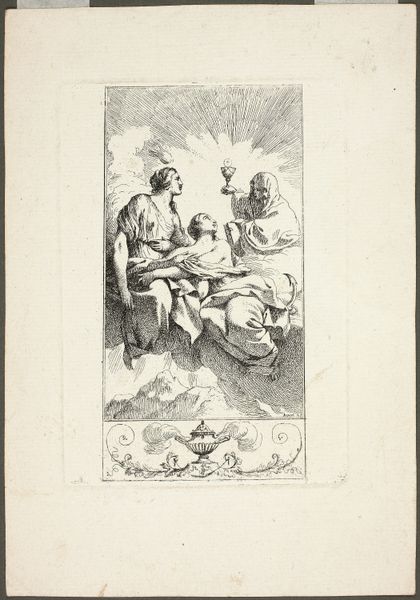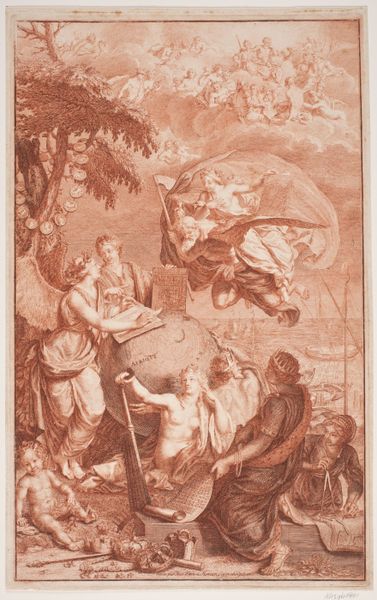
Dimensions: height 214 mm, width 173 mm
Copyright: Rijks Museum: Open Domain
Editor: So this is Jean Baptist Leprince’s "Adoration of the Angels," dating roughly from 1744 to 1781, using pen, etching and wash. It’s currently at the Rijksmuseum. I’m struck by the fluid lines and how the limited color palette creates such a serene feeling. How would you approach interpreting this piece? Curator: I am most interested in how the artist arranges line and form to establish meaning. Note, for instance, the curvilinear contours which delineate the figures against a muted backdrop, almost as though everything and nothing is secondary to the focal grouping of angels and mother. The pen work accentuates movement in their robes. It serves to draw the viewer's eyes through a delicate rhythm. It leads us to a moment frozen by its artistic composition. Observe how each of the angelic figures interact and whether there’s any dynamism, contrast or interruption. What do you notice? Editor: It’s a bit odd, actually, because the lines are so loose, it almost looks unfinished, or like a study perhaps? The light and shadow created by the wash are subtle, adding volume, but not in a highly detailed way. Curator: Precisely. The technique speaks to a certain approach. Consider then the materiality; the etches allowing to make tonal choices – wash technique to render the ethereal nature of the subject. How does this impact our reading? What philosophical underpinnings might be found when comparing its graphic nature and composition with other artworks? Editor: That’s interesting; thinking about it as more than just a religious scene, but as a collection of forms working together... it encourages me to examine the artwork's essence, its compositional foundation, rather than its narrative alone. Thank you. Curator: Indeed. And from the composition's emphasis on line and tone, we may find this period offers unique insight on artmaking itself.
Comments
No comments
Be the first to comment and join the conversation on the ultimate creative platform.
